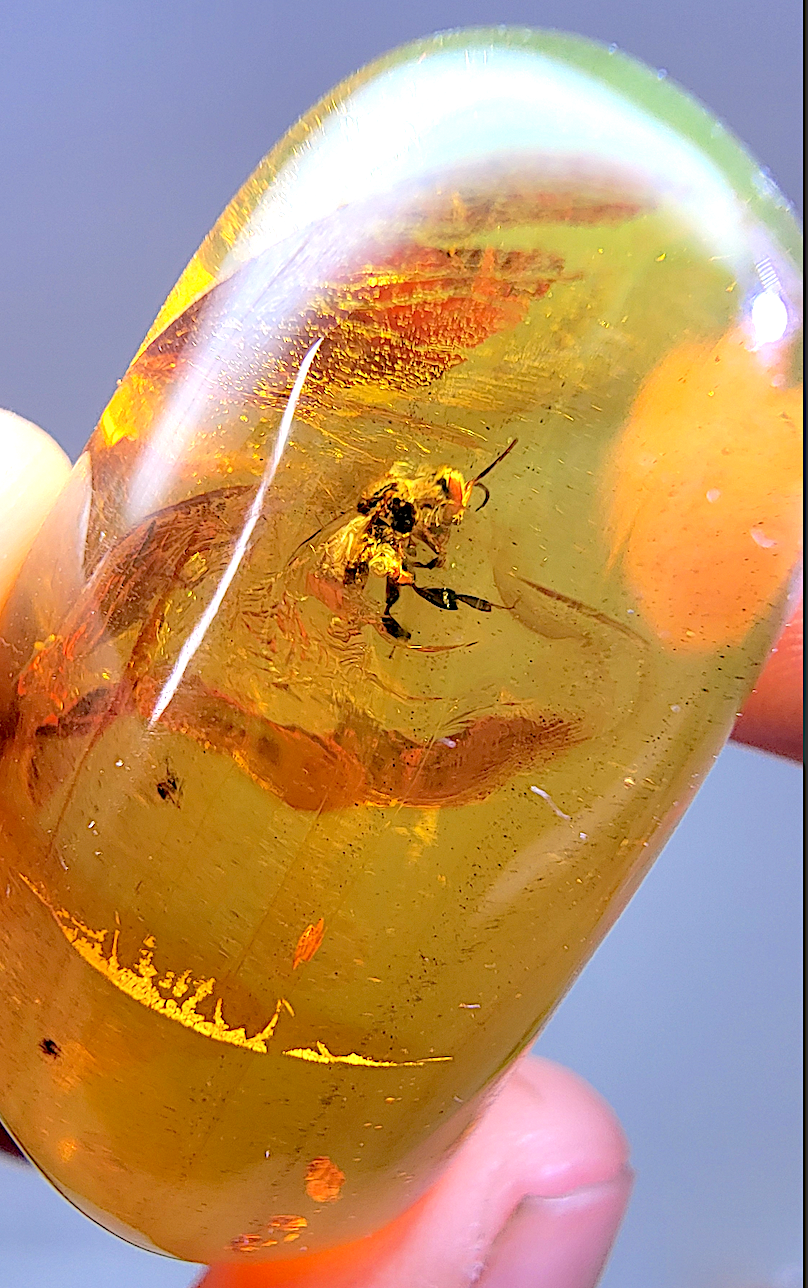Amber Encyclopedia Entry #13: Stingless Bee fossil in Dominican Amber
- Ryan Zschomler
- Jul 22, 2025
- 1 min read
Updated: Aug 8, 2025
This specimen features a well-preserved stingless bee fossil embedded in Dominican amber from the Miocene epoch. Originating from the tropical forests of Hispaniola, this amber dates back approximately 15–20 million years. The bee’s legs, thorax, and antennae are clearly visible, offering insight into ancient pollinators from a long-extinct ecosystem.

Inclusion Type: Stingless bee (Tribe: Meliponini)
Estimated Age: 15–20 million years (Miocene)
Locality: Dominican Republic (Hispaniola)
Amber Type: Dominican amber
Preservation Quality: High — visible thorax, legs, and head structure

Dominican amber piece showing a stingless bee fossil.
Stingless bees (Meliponini) are part of the family Apidae and are ecologically critical pollinators in tropical environments. Unlike their modern descendants, fossilized stingless bees provide a snapshot of prehistoric forest life. Dominican amber is especially important for preserving bee lineages, as it formed in resin-producing legume forests that supported dense arthropod activity.
While this specimen has not been assigned to a specific genus, its robust thorax and compact build are consistent with extinct species of tropical Meliponini. The Dominican Republic’s amber mines continue to yield well-preserved hymenopteran inclusions used in entomological and evolutionary research.
Where to Buy Fossils Like This:
You can find Burmese amber with insect inclusions, enhydros, and unique combinations like this one at:
See Also:



Comments